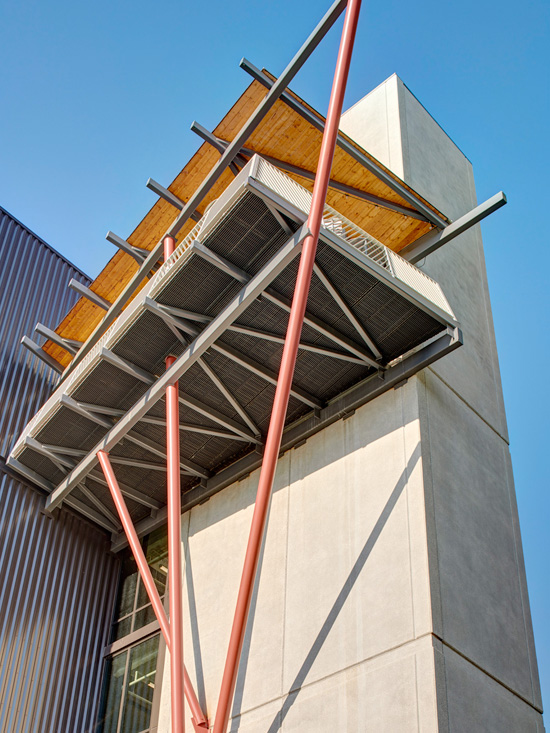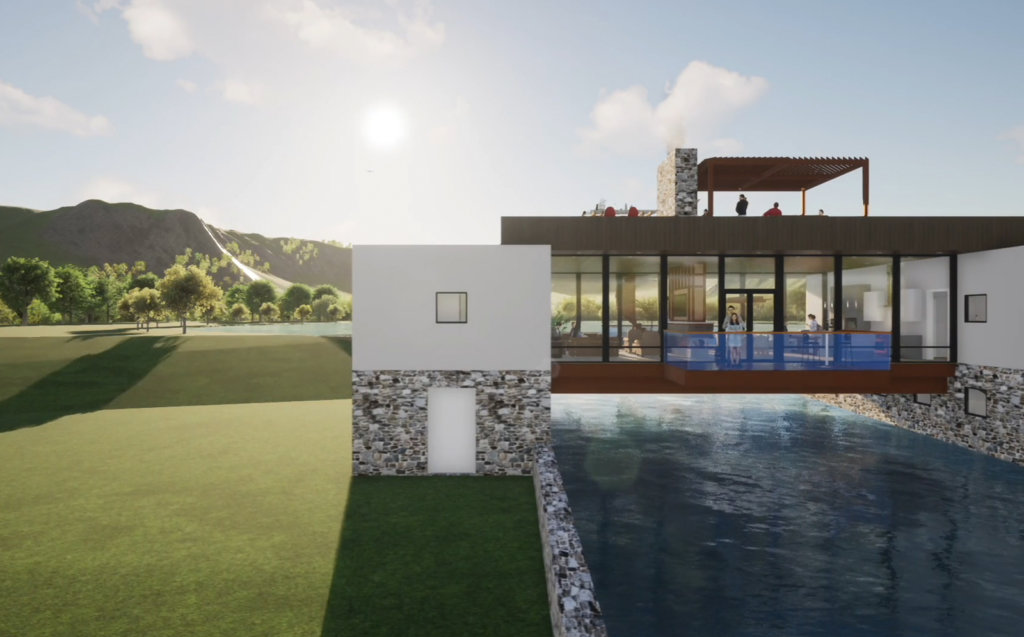If seeing is believing, it can happen using Virtual Reality
Peter Twohy, Founding Principal at Baltimore-based 2e-architects says he is starting a renaissance. A renaissance to improve the relationship between client and architect, to change the power dynamic between contractors, developers, and architects, and to reduce dreaded change orders between client and contractor. He says he does this by creating Virtual Reality models of all his projects using BIM in Archicad to enable project visualization and Virtual Reality with Twinmotion integration–all on one platform.
Twohy’s firm now provides Virtual Reality (VR) as a standard practice because of what he calls astonishing results. His clients see in 3D, in near-to-true-life conditions what their finished home will look like. Equipped with VR goggles clients can explore the built environment before the first nail is even struck. Every detail can be examined including how the sunlight will enter their kitchen in the morning and the sunset off the dining room window could enhance dinner parties. VR makes the home design come alive and become real to clients in that moment—a stark contrast from the typical, limited understanding of 2D plans and elevations.
We just pull up the model on a mobile device with BIMx and can provide contractors direct access to the file. VR also closes any knowledge gaps for anyone who is coming to the process new. Change orders do not have to be the norm when you use VR.
Peter Twohy, 2e-architects
You might also like:

More Articles:
Archicad
Customer Stories
Education
Industry News
Tips, Resources + Downloads
Webinar Recordings
Empowered by VR, clients can then prioritize features, and once the firm receives bids from contractors and builders, they can make informed decisions about their home. A feature that does not seem as significant on a flat, 2D plan takes on new significance when an architect can show it in 3D and demonstrate various design scenarios with and without it. In this way, the relationship the architect has developed with the client and the deep dive done to explore and deliver on their hopes, wishes, dreams, and needs for their custom home becomes paramount.
Twohy says developers and contractors currently wield more power than architects with clients. He attributes the imbalance to the biggest portion of a client’s budget going to construction. When builders make cost-cutting suggestions to client without understanding the impact fully – the architect can use VR to help them make the decision with a more robust understanding. Twohy says VR helps showcase the architect as client advocate with the builder. He adds that it can also improve a critical trust factor between the client and architect thus elevating the value of the architect in the custom home process.
Even with the best of intentions and the best builders, details get missed. VR helps to explain the design in full color to the builder and improves the accuracy of the build and streamlines the process. “We just pull up the model on a mobile device with BIMx and can provide contractors direct access to the file. VR also closes any knowledge gaps for anyone who is coming to the process new. Change orders do not have to be the norm when you use VR.”
VR is here to stay. Those who use it will prosper. Those who don’t will – sooner or later – find it impossible to compete. Far less talented architects offering VR will easily win jobs from their more talented competition, this is why every architect must learn VR.
Peter Twohy
It may sound simple now, but the culmination of Virtual Reality design occurred over a decade of work on Twohy’s behalf. It started when Twohy made it his policy to provide unlimited 3D renderings to all his clients. Twohy’s associate, Chris made the connection that the next step after 3D and photo realistic renderings was to stitch everything together into VR. “After about a year of trial (and mostly error), Chris and I learned to set up our Archicad models with the right layers and the right surfaces so the transition into Twinmotion is simpler, easier, and much, much faster.”
Using Twinmotion
For 2eArchitects, the moment Twinmotion comes into the process is a little different per project. Generally, Twohy’s clients will have already agreed on the major components of the design utilizing the BIMx presentation and then he proceeds to VR in Twinmotion. Typically, by the third design meeting Twinmotion comes into play. “We walk through with Twinmotion and use it to explore materials and custom surfaces. We set up the exterior wall as a surface in Archicad, so it won’t be confused with any other surfaces and can therefore be manipulated independently. This is critical. We follow this protocol for fabrics, floors, the countertops, exterior walls, and anything else that’s going to be important–so we can manipulate it individually.” By creating custom surfaces in Twinmotion, Twohy can easily move them in and out in Archicad and quickly address client questions or changes.

Spending time to create videos and VR animations, he says, is essential to client satisfaction, which is why Twohy wants ALL architects to understand and use this technology themselves; to invest wisely and learn how to make the most of it. As an Archicad enthusiast, Twohy is a true believer in the power of the software.
“Archicad with Twinmotion is as an essential part of what it means to be a successful custom, high-end residential home architect. If you’re drawing by hand, you’re never going to get to Virtual Reality, but if you’re drawing with Archicad you can ramp up and get training so that you can make VR models for your clients so they can see vividly the design. Abraham Lincoln said, if I had 10 hours to chop down a tree, I would spend the first eight sharpening my axe. I see Archicad as a tool that you can sharpen–making your models amazing.”
Does added visualizing create additional work? Twohy says no, adding that his firm has managed a workload of roughly eight homes a year with a very small staff. “I am an architect with projects in the mid-Atlantic region. I work by myself except for contracted help from my colleague, Chris. The goal is to go in a straight line from concept design all the way to the permit drawings with minimal speed bumps.”
“It’s a business, and as such we must always be learning and streamlining our process. Adding a deep richness to the model does not impact file size, efficiency, and workflow. Unlimited three-dimensional drawings were a big part of my success for a decade, VR took it to a whole new level.”
VR for Architects
Twohy’s followed up his idea to create a renaissance in architectural design by developing a workshop on how to visualize in three dimensions and capitalize on VR technology. It teaches architects how to integrate VR on every project for every client. To date, 1500 architects have participated with the online workshop and hundreds have taken his advanced training. For more information, please visit 2e Architect’s website: 2e-architects.com.